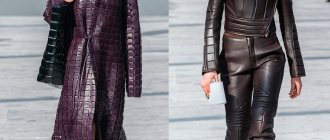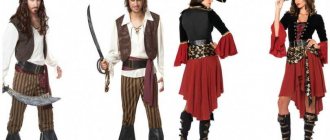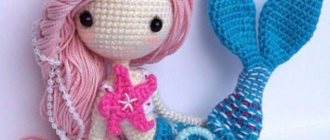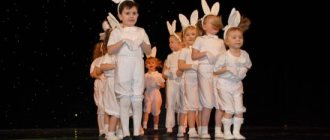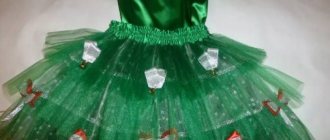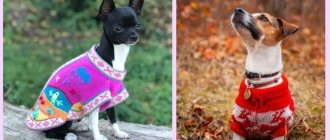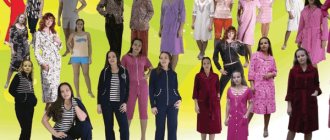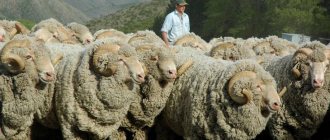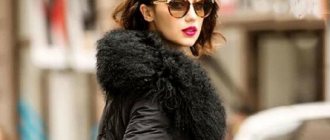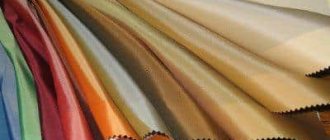Georgian national costumes have always been distinguished by a special dandy. Representatives of the fair sex used to be distinguished by fitted, elongated dresses with a bodice decorated with stones or ribbon. Velvet was used to sew the belt, and embroidery was used to decorate it.
The male population of Georgia could be seen in cotton shirts and double pants. The outer clothing was chokha or arkhaluki. With their help, a stately figure was emphasized. In addition, such outfits served to highlight the broad shoulders of a man.
Chokha as the main expression of Georgian costume
Chokha is a typical example of Georgian costume. There are male and female versions of it. Initially, camel or sheep wool was used to make such clothes. Modern outfits have a loose hem. They use artificial or cotton fabrics. The chokha is fastened from the top to the waist. The chest is decorated with decorative inserts similar to gazyrs. The belt is supplemented with damask steel
Chokha sleeves are sewn in such a way that they cover a man’s arms up to the wrist. They are sometimes rolled up to the shoulders in the form of a kind of scarf. Chokha is produced in six colors. Purple outfits are popular among tourists, while classic white and black outfits are popular among locals. In addition, in Georgia you can buy blue, burgundy or gray chokha.
Hats
In different regions of Georgia, headdresses differ in purpose, ornament, color and size. To make hats, sheep wool or astrakhan wool is used. Fine wool is used to sew Megrelian kabalakha in the shape of a cone. The hood in this case is complemented by a brush. The white or black Kakheti headdress kakhuri is made like a Svan hat, for the manufacture of which felt is used, and a ribbon is used to decorate it. This type of headdress is typical for highlanders. Svaneti is still crowded with men wearing similar hats. In winter, your head will be warm in it, and in summer it will not be hot.
Khevsureti gave its name to the bright and elegant Khevsur hat, which is decorated in a special way. For knitting it, half-wool yarn is used. Crosses serve as decoration. A round or quadrangular small cap in Georgia is called papanaki. To sew this Imeretian headdress, cloth is taken. The braid serves to decorate it. Papanaki also has a garter. Beads are used to decorate a woman's headband in Chikhtikopi. It is complemented by a veil.
Features of women's Georgian costume
If the costume of Georgian men should be strict, then that of women should be elegant and graceful. Wealthy beauties wore long blue and white silk and satin kartuli dresses. Only velvet was used to sew katibi outerwear. The bottom was trimmed with fur. Lechaki, a white tulle veil, was considered a common headdress among the fair sex in Georgia. The Baghdadi headscarf served to cover the face of a Georgian woman. Married ladies were supposed to wear lechak. At one end they wrapped the neck.
Women's
A costume for girls emphasizes femininity and adds grace. An integral attribute is attention to detail. Dresses are usually decorated with embroidery, gold trim, pearl beads, and beads. The emphasis of the silhouette is on the waist, and the length of the skirt reaches the floor. The feminine cut is emphasized with a velvet or silk belt, which is also decorated with gold embroidery or ribbons. What features exist in different regions?
In Adjara , women's traditional clothes were decorated with hand embroidery on the chest insert and a wide long belt with patterns and tassels.
In Mokhevi, gold braid and embroidery, as well as a silver sash, served as decoration. Women wore a white lace veil on their heads - mandili.
Megrelian attire by velvet sleeves with slits and silver fasteners.
Ossetian dresses had black velvet trim. Characteristic details: long white shirt, turn-down collar and gold belt.
Tushino girls wore chokha - a fitted, elongated outerwear without a collar. It was decorated with silver clasps and an embroidered chest insert. Bright braid was sewn to the sleeves. The outfit was completed with a black veil on her head and knitted boots with flat soles.
The noble attire consisted of a silk or satin dress with sleeves flaring downwards, a velvet cape, and a long white belt - a sash. The heads of urban noblewomen were decorated with headdresses with hand-made gold embroidery.
Urban women dressed in a guipure shirt trimmed with velvet and a blue hand-embroidered cape. The look was completed with a sash, a beaded chichi and a velvet belt bag - a kitty.
The common Georgian costume for women consisted of a shirt with buttons, a short cape with split sleeves and a sash with embroidered traditional patterns. Mandatory additions included silver jewelry and a headdress - a translucent mandili, with a velvet chikhi-kopi on top.
The wedding dress was made of satin fabric. The insert on the chest was decorated with patterns, the sleeves were split. The sash was made of pink velvet. The bride wore a transparent white gauze cape on her head. Pearls were used as jewelry: they were on the sash, in the form of threads on the forehead and on the neck.
Svan beauties wore satin dresses with a high collar. The waist was emphasized by a belt with a national ornament. A woolen chokha with velvet inserts was worn on top. On the head is a traditional veil.
The Abkhazian suit had a train and silver fittings. Akhalukha made of chiffon with lapels was worn downwards. A mandatory component of the image was a snow-white mandili and a silver crown.
Rachinsky's outfit featured a red blouse, from which a patterned shirt was visible. The sleeves were short and voluminous, the skirt was decorated with traditional patterns and piping. A sleeveless cape with ruffles served as outerwear. The mandili was decorated with red edging and ornaments. Leather or suede ankle boots, reminiscent of modern UGG boots, were worn on the feet.
Mokhev winter attire included embroidered outerwear, woolen gloves and a scarf. The akhalukhi (shirt) was belted with a black velvet sash.
Another option for women's Svan toilet : a bright dress with ruffles. The red wool top was complemented by silver hardware and a patterned chest panel. On the head is a small black cap and a traditional light cape.
Men
Any person, even who has no idea about the culture of Georgia and the Caucasus, associates these people with the Circassian people, also called Georgian Chokha. Members of Georgian folk ensembles often perform in classic black outfits. The dance unsurpassedly demonstrates all the beauty and princely grandeur of the decoration.
This is a fitted, outerwear item with a loose hem. Not to the floor, but just below the knee. It is buttoned tightly from above to the waist. The Georgian costume is decorated on the chest with inserts - gasyrs, special compartments for gasyrs (powder charges).
The collar is mostly missing. But some models may have a neat stand. The princes of Tbilisi decorated the chokha with an embroidered family coat of arms and could even dance in them.
The leather belt of outerwear must have damask steel for a dagger or saber and silver jewelry. Women can also have a robe such as chokha in their wardrobe. Even today it is worn for weddings or formal occasions.
Another type of outerwear for which velvet was used and decorated with fur is called kulaja. It was worn by representatives of noble families for special occasions. The hat on her head went harmoniously with her. In cold weather, Georgians wore a fur coat embroidered with gold or silver, called pabadi or kurka.
The Georgian men's national costume is an ensemble of several elements. A lower shirt made of chintz or canvas was put on the upper part of the body by hand. Next are the lower and upper trousers (sharvalis), which were usually made of cloth. Often all clothing was made from durable materials, which made it possible to wear it for years. And over the course of a long period of use it did not lose its appearance and practicality.
The arkhaluk is worn on top, and then the cherkeska or other outer dress. Georgian nobles wore silk kaba. A distinctive feature of which is the decoration with a black silk cord. Buttons on the cuffs and chest were also made from it.
The warlike, proud people were obliged to carry weapons with them in order to be able to defend their honor and dignity at any time. Even the poor tried to acquire a dagger, which was the pride of a Georgian. More noble nobles on special occasions wore a saber and a pistol on their belts.
When the girl turned seven years old, she should already have a Georgian costume for a girl. It looked like a woman's outfit and was decorated with ornaments and embroidery. But without excessive pomp. Taking into account the active mobility of children, the dress acquires a shortened length, which makes it more comfortable. The sleeves reveal the palms. It was made in colorful colors than the more chaste dresses for adults.
Men's
The first association that comes to anyone’s mind when mentioning Georgian folk clothing is Circassian. It is also called chokha. It has stuck in the mass consciousness also because Georgian folk groups usually wear it to performances. The dance especially emphasizes the stateliness and elegance of the costume.
Chokha is one of the most complex pieces of national costume paraphernalia in the world. Its peculiarity lies in the number of parts, of which there are at least thirteen. There are most likely no rivals for this parameter in any other culture on the globe. And this can certainly be said about everyday wardrobe items, which is what chokha was worn as. This complexity and abundance of details gives it that uniqueness and beauty.
Now let’s talk about the traditional male appearance in different regions of Georgia.
In Kakheti and Kartli, the noble caftan was embroidered with gold threads. A white high-necked shirt was worn underneath. A dagger was attached to a silver belt. Military-type leather boots were worn as footwear.
The common Georgian noble costume consisted of a red velvet top, a black silk shirt with piping, a belt and leather boots. The outerwear was decorated with golden braid and black trim.
In Samegrelo and Abkhazeti, the chokha was fitted and elongated. Sockets for cartridges were sewn onto the chest. Underneath was a silk shirt with a stand-up collar. A papanaki, a traditional hat, was attached to the shoulder. The boots were standard - leather mkhedruli.
In winter, in Tusheti, men wore a woolen coat with a high collar trimmed with astrakhan fur. The chokha was decorated with double twisted braid, the buttons were on loops. The shirt with a closed collar was made of silk. Important attributes are a sash with silver fittings and military boots.
Gurian and Adjarian men wore “chakura” - a piece of outerwear made of velvet, decorated with gold threads and ribbons along the edges. Papankas were also decorated with gilding. Daggers and other weapons, as well as a powder flask and a leather wallet were attached to a belt painted with patterns. The pants were tucked into the shoes.
For a wedding , it was customary to dress up in a white silk shirt with a high collar. Grooms wore a white wool chokha lined with satin. Weapons were not placed on the belt. The boots were chosen from black leather.
Traditional for all men was the following set: a wool chokha with a closed collar and pockets on the chest, on top of the kabalakha - a woolen scarf decorated with ornaments. As a rule, they covered the shoulders. The cape could also be used as a headdress.
Another variation of the Gurian-Adjarian costume is the chakura, which differs from the previous one in color and long mkhedruli.
Traditional shoes
Shoes among Georgians also differ depending on their place of residence, class and financial situation. In mountainous areas, chitebi were especially popular. They are knitted socks with fur soles. The fur on them was located on the outside. Due to this, it was possible to prevent slipping.
Residents of Georgian cities wore koshi. These are shoes that are not equipped with heels with the toes turned up. Women's models were made of velvet. Such products were equipped with high heels. In winter, ichigi were used. These are leather boots with fur. A characteristic feature of such products is a soft toe.
Men with good incomes wore tsagas or mesti. This is a high model of boots, in the manufacture of which leather was used. Often such shoes were decorated with precious stones.
Poor people preferred boots called kalamani. Such shoes were used by both men and women. For summer, such products were created by weaving leather or felt strips. Winter models were made from solid materials that were tied using ropes. Georgians with average incomes wore patchouli made from soft leather.
Hats
The most famous headdress of the Caucasus is the papakha - a voluminous hat made of astrakhan wool or sheepskin. Gives the image of a man pride and honor, never allowing him to lower his head. It was supposed to be removed only in certain cases. Under no circumstances was it allowed to lose her. They said that if you lose your hat, you lose your head along with it. They often wore jewelry and gold.
In Georgia, costumes and accessories are worn differently from others in different regions. Headdresses have different purposes, patterns, shapes, and colors. The most common of them:
- Khevsur hat. Knitted from half-wool yarn. Decorated with embroidery with crosses.
- Svan hat. It is made of felt and trimmed with braid. It warms in winter and protects from the scorching sun in summer.
- Kabbalah. A special Megrelian headdress. It is made in the shape of a cone made of fine wool with long ends that cover the neck. Distinguished by the tassel on the hood.
- Papanaki. Worn by Imeretians. The felt hat can be round or rectangular in shape. Decorated with braid or embroidery.
- Kakhuri. Kakheti hat made of white or black wool.
- Chihtikopi. The women's headband hat was embroidered with beads and decorated with a veil or veil. Braids must be visible from under light fabric.
The veil is called lechaki. It was attached to the head with a special headband, and dark bagdadi scarves or veils were put on top, which covered the face, leaving only the eyes open.
Georgian clothing looks elegant, highlighting the broad shoulders of a Georgian man. The Adjarian costume is interesting and rational. There are no unnecessary details, it does not restrict movement and is very practical. It consists of a shirt and uniquely tailored pants.
The narrow bottom of the trousers and wide top contributed to a calm and confident walk. Over the shirt they put on a vest of the same color with pants, and then a chokha. In the finale they belted themselves with a sash. They wore a hat made of sheepskin or other material corresponding to the folk style.
Women dressed up in a long, almost floor-length red or blue shirt and trousers. An orange chintz dress was worn on top. Which swung open with graceful movements. And an apron made of wool was tied in front. The head was decorated with a calico scarf, the corner of which covered the neck. From the age of twelve, the girl wore a white veil that covered her face.
